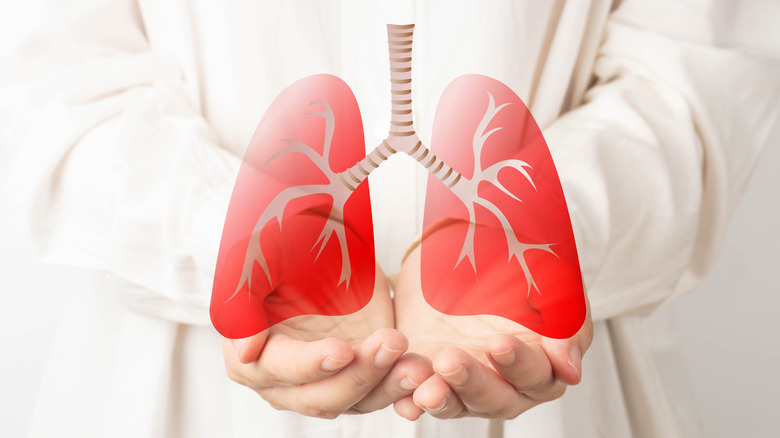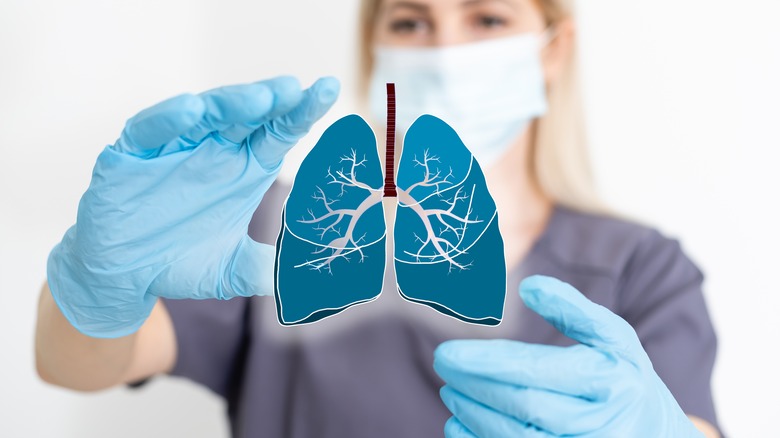What Is An Air Embolism?
An air embolism, sometimes called a gas embolism, is a condition where air becomes trapped in the vein or artery, blocking the passage of blood. People sometimes confuse air embolisms with aneurysms because both cause problems with blood flow, but they're not the same, according to Healthline. There are two main types of air embolisms. When an air bubble enters the veins, it's called a venous air embolism. The other type is an arterial air embolism, which happens when air enters the arteries.
According to Medical News Today, air in the veins can obstruct pulmonary circulation in the long run and restrict blood supply to certain areas of the body. It can also damage the central nervous system, per Medical News Today. A 2022 study published in the journal StatPearls further reiterates this claim noting that just 1 to 2 ml of air injected into the central nervous system can cause death. The study also indicated that air bubbles in the veins aren't as serious as air trapped in the arteries. Although fairly infrequent, air embolisms in general can be potentially fatal and should be seen as a medical emergency. This is especially true for arterial air embolisms.
What causes an air embolism?
Healthline notes that an injection or surgical procedure can cause an air embolism. The prevalence of air embolisms during surgical operations is reiterated in this 2007 study published in the journal Anesthesiology. The study notes that vascular air embolisms are now a common occurrence in the operating room. Therefore, anesthesiologists must be aware of the morbidity rate and adopt best practices in preventing fatalities.
An explosion is another cause listed by Healthline. Explosions can open the veins or arteries, causing air to enter. The Centers for Disease Control and Prevention (CDC) reiterates this claim stating that bomb blasts are a major cause of mortality in combat scenes. A blast wave from a high-explosive detonation can damage the lung and cause air to enter a vein or artery in the lung.
According to NHS UK, diving can lead to air or gas embolism. Scuba divers can be vulnerable to the condition when they either surface quickly, hold their breath after surfacing, or spend too long underwater. These actions can rapture the air sacs in your lungs, which can then move air into your arteries.
Air embolism symptoms, diagnosis & treatment
Air embolism symptoms include — but aren't limited to — nausea, chest pains, seizures, itchy skin, anxiety, and irregular heartbeat, according to Medical News Today. As these symptoms are vague, they can sometimes be attributed to other illnesses. If you have any or a combination of these symptoms, it's important to consult with your doctor for an accurate diagnosis.
When diagnosing the condition, your doctor might use a chest X-ray or a stethoscope to detect gas bubbles in the veins or arteries. They might also monitor your breathing rate, blood pressure, and airway sounds, per Healthline. Other diagnosing methods include transesophageal echocardiography and doppler ultrasonography (via Medical News Today).
As for treatment, Healthline explains that it usually involves identifying and stopping the source, preventing damage to the body, and resuscitation, if needed. The source further states that someone with an air embolism might be placed in a sitting position to prevent the embolism from reaching the brain, heart, and lungs. According to Medline Plus, hyperbaric oxygen therapy, which is often used to heal infected wounds, is another treatment option. In this type of therapy, a pressure chamber is used to increase the amount of oxygen in the blood.



